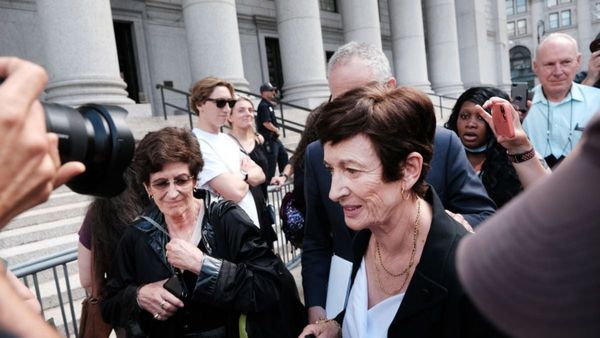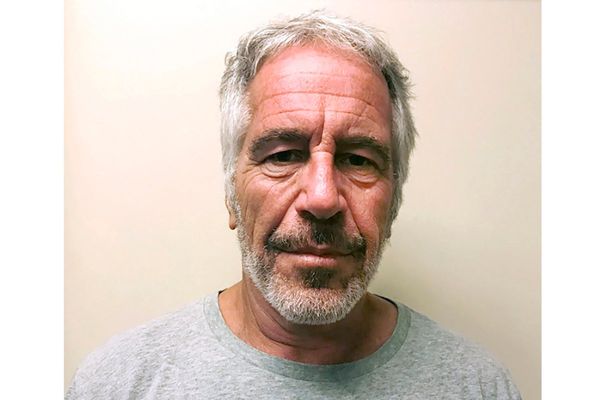Welcome to Hall Pass. This newsletter keeps you plugged into the conversations driving school board politics and governance. Each week, we bring you a roundup of the latest on school board elections, along with sharp commentary and research from across the political spectrum on the issues confronting school boards in the country’s 14,000 school districts. We’ll also bring you the latest on school board elections and recall efforts, including candidate filing deadlines and election results.
In today’s edition, you’ll find:
- On the issues: the debate over arming teachers
- School board filing deadlines, election results, and recall certifications
- U.S. Supreme Court rules in Carson v. Makin
- Extracurricular: links from around the web
- Candidate Connection survey
Reply to this email to share reactions or story ideas!
On the issues
In this section, we curate reporting, analysis, and commentary on the issues school board members deliberate when they set out to offer the best education possible in their district.
The debate over allowing teachers to carry firearms
Following the school shooting at Robb Elementary in Uvalde, Texas, where 19 students and two teachers were shot and killed, politicians and commentators have proposed policies intended to make schools safer.
Ohio Gov. Mike DeWine (R) signed legislation June 13 to make it easier for teachers to carry firearms in school safety zones. This section will examine the debate over arming teachers and whether it would make schools safer.
The Los Angeles Times Editorial Board writes that armed teachers would be ineffective against school shooters and training would prove impractical. The Editorial Board also says keeping guns in schools could create dangerous situations and add daily stress to teachers trying to keep classroom guns out of students’ hands.
Washington Post columnist Kathleen Parker compares current school shooting procedures to Cold War nuclear drills where students were made to hide under their desks. Parker writes that it’s better to allow teachers to arm themselves than be at the mercy of a school shooter.
Editorial: Don’t expect teachers to be substitute police officers when the shooting starts | The Los Angeles Times Editorial Board, The Los Angeles Times
“Fans of arming teachers are ignoring the teachers themselves, who for the most part don’t want anything to do with guns in the classroom. Several states, including Texas, already allow individual school districts to permit teachers to carry guns. Only 300 teachers in Texas have done so — less than one in a thousand. … Most teachers believed the situation would make schools more dangerous. … Let’s not forget that police have bulletproof vests to protect them when encountering people with guns. Teachers, unless they are remarkably quick, agile and terrific shots, would be vulnerable to the first bullet fired as well as the daily stress of trying to ensure that students don’t have access to the classroom gun.”
Opinion | Yes, it has come to this. It’s time to arm teachers. | Kathleen Parker, The Washington Post
“I’m not inclined to hide under a desk waiting for the Soviets to launch a nuke, as schoolchildren were made to do in the ‘60s — or today, hoping the bullets from an AR-15 won’t find my quivering hide. I’d rather take my chances defending myself — and any children in my care — than die watching my babies being mowed down by a homicidal maniac. … I’m not a teacher, but if I were, I’d want to have ready access to a gun. Some teachers, God bless them, aren’t up to such a challenge and shouldn’t be asked to be. Others are willing and able. In the absence of anyone else, why not allow them to defend our children? None of these policies should be necessary, but, clearly, we’re not doing enough. Until we can figure out broad, societal remedies short of cloning my father — a dicey proposition, I’ll admit — I’d feel better knowing my grandchildren were in a school where someone knows how to stop a killer.”
School board update: filing deadlines, election results, and recall certifications
Ballotpedia has historically covered school board elections in about 500 of the country’s largest districts. We’re gradually expanding the number we cover with our eye on all of the roughly 14,000 districts with elected school boards.
Election results from the past week
States with school board filing deadlines in the next 30 days
Districts in our scope in Texas held general runoff elections on June 18. Districts in our scope in Georgia and Alabama held general runoff elections on June 21. Click the links below to see results.
Texas
We’re covering general runoff elections in the following districts on June 18.
- Richardson Independent School District
- Mansfield Independent School District
- Fort Worth Independent School District
Georgia
We’re covering general runoff elections in the following districts on June 21.
- DeKalb County School District
- Gwinnett County Public Schools
- Cherokee County School District
- Savannah-Chatham County Public School System
Alabama
We’re covering general runoff elections in the following districts on June 21.
Upcoming school board elections
Districts in Utah are holding primary elections on June 28. Districts in Maryland are holding primaries July 19.
Utah
We’re covering primary elections in the following districts on June 28.
- Alpine School District
- Canyons School District
- Davis School District
- Granite School District
- Jordan School District
- Nebo School District
- Weber School District
Maryland
We’re covering the following school board elections on July 19.
- Baltimore County Public Schools
- Cecil County Public Schools
- Frederick County Public Schools
- Harford County Public Schools
- Howard County Public Schools
- Montgomery County Public Schools
- Prince George’s County Public Schools
School board candidates per seat up for election
Since 2018, we’ve tracked the ratio of school board candidates to seats up for election within our coverage scope. Greater awareness of issues or conflicts around school board governance can result in more candidates running for each office. Click here to see historical data on this subject.
This year, 2.34 candidates are running for each seat in the 968 school board races we are covering in districts where the filing deadline has passed. The 2.34 candidates per seat is 18.7% more than in 2020.
U.S. Supreme Court rules in Carson v. Makin
On June 21, the U.S. Supreme Court handed down a ruling in Carson v. Makin, one of two cases with implications for public education that were set to be decided before the justices begin their summer recess in late June. The other case, Kennedy v. Bremerton School District, is still pending as of this writing.
Today, we’ll look at what was at stake in Carson v. Makin and what the Court’s ruling means for public education. We’ll also preview Kennedy v. Bremerton School District, so you know what to expect when the Court issues its opinion in that case.
Carson v. Makin concerns public education funding and religious education, while Kennedy v. Bremerton School District concerns religious expression at a public school and the Constitution’s establishment clause.
Click the headings below to read more of our coverage of each case. Click here to see our full coverage of the Court’s 2021-2022 October term.
Carson v. Makin concerned public education funding and religious education. On June 21, the U.S. Supreme Court ruled 6-3 that Maine violated the Constitution when it excluded private religious schools from a state-funded tuition program. Writing for the majority, Chief Justice John Roberts wrote: “Maine’s ‘nonsectarian’ requirement for its otherwise generally available tuition assistance payments violates the Free Exercise Clause of the First Amendment. Regardless of how the benefit and restriction are described, the program operates to identify and exclude otherwise eligible schools on the basis of their religious exercise.”
Justices Stephen Breyer, Elena Kagan, and Sonia Sotomayor dissented. According to SCOTUSBlog’s Amy Howe, Breyer “Breyer emphasized that the First Amendment’s free exercise and establishment clauses were intended to strike a balance on the interaction between government and religion, with the ultimate goal of ‘avoiding religious strife’ in a country that now has over 100 different religions. Maine’s program is intended to foster precisely this kind of balance, Breyer argued, and the state has the right to opt not to fund religious schools.”
Summary: In Maine, more than half of the state’s 260 school districts do not operate their own high schools. The Maine Town Tuitioning, which the legislature created in 1873, pays for students in districts that do not operate their own high schools to attend public or private schools inside or outside of the state. According to the program’s requirements, approved private schools must be nonsectarian, meaning that it is not related to a religious group or organization.
In August 2018, three sets of parents sued the Commissioner of the Maine Department of Education in the United States District Court for the District of Maine, alleging the program’s nonsectarian requirement violated their First Amendment rights. The parents sought to send their children to private Christian schools that the state deemed sectarian, and ineligible for funding.
The district court ruled against the parents in April 2019, at which point the parents appealed to the U.S. Court of Appeals for the 1st Circuit.
Two weeks after the 1st Circuit heard oral arguments, the U.S. Supreme Court heard arguments in the case Espinoza v. Montana Department of Revenue, which concerned whether the government could exclude religious institutions from student-aid programs. On June 30, 2020, the Supreme Court ruled 5-4 that the Montana ban on state aid to sectarian schools violated the First Amendment’s free exercise clause.
Both parties in Carson v. Makin filed briefs with the 1st Circuit on how Espinoza affected U.S. District Court for the District of Maine’s ruling in the case. Attorneys for the parents said Espinoza supported their claim that the state program’s nonsectarian requirement violated the free exercise clause. Attorneys for the Maine Education Commission said Espinoza had no effect on the case, and the district court’s ruling should be upheld. On Oct. 29, 2020, the 1st Circuit affirmed the U.S. District Court for the District of Maine’s ruling against the parents.
The parents suing the state presented the following question the Court: “Does a state violate the Religion Clauses or Equal Protection Clause of the United States Constitution by prohibiting students participating in an otherwise generally available student-aid program from choosing to use their aid to attend schools that provide religious, or ‘sectarian,’ instruction?”
Kennedy v. Bremerton School District
Let’s turn to Kennedy, a case the U.S. Supreme Court is expected to decide within the next two weeks.
Summary: Joseph Kennedy was an assistant high school football coach with Bremerton School District (BSD) in Bremerton, Wash., from 2008 to 2015. At the end of football games, Kennedy would kneel at midfield and say a prayer. At first, Kennedy kneeled and prayed alone. Several games into his first season as a coach, some players asked if they could join him. Over time, Kennedy began giving motivational speeches that included prayer and religious content. According to Kennedy, he never required nor asked any student to pray or participate in any religious activity.
The school district told Kennedy his actions violated school board policy and required him to stop so as not to risk violating the Constitution’s Establishment Clause. Kennedy said he would not comply. The school district offered to accommodate Kennedy’s prayers by allowing him access to a private location in the school or athletic facilities. Kennedy declined the offers and prayed on the field again after two more games. Kennedy was placed on administrative leave. Kennedy sued the school in U.S. district court for violating his right to free speech. The court ruled that the school district suspended Kennedy solely to avoid violating the establishment clause. The Ninth Circuit Court of Appeals upheld the judgment.
Kennedy presented the following questions to the Court:
- “Whether a public-school employee who says a brief, quiet prayer by himself while at school and visible to students is engaged in government speech that lacks any First Amendment protection.”
- “Whether, assuming that such religious expression is private and protected by the Free Speech and Free Exercise Clauses, the Establishment Clause nevertheless compels public schools to prohibit it.”
Extracurricular: education news from around the web
This section contains links to recent education-related articles from around the internet. If you know of a story we should be reading, reply to this email to share it with us!
- It’s Time To Take Teacher Burnout Seriously. Here’s How. | EdSurge
- New Education Department Effort Aims to Elevate the Role of Parents in Schools | U.S. News & World Report
- Getting real-world experience: High schoolers design a ‘life skills’ lab for students with disabilities | Chalkbeat
- Despite pandemic promises, many rural students still lack fast internet | The Washington Post
Williamson County Board of Education general election survey responses
Today, we’re highlighting survey responses from the upcoming Aug. 4 Williamson County Board of Education school board general elections in Tennessee. Six seats are up for election—Districts 2, 4, 6, 8, 10, and 12. Sixteen candidates are on the ballot. Primaries were held May 3.
Today, we’re featuring responses from two of those candidates—Tiffany Eccles (I) and Kristi Bidinger (I). Eccles is running to represent District 2, while Bidinger is running to represent District 6.
Here’s how Eccles responded to the question “Please list below 3 key messages of your campaign. What are the main points you want voters to remember about your goals for your time in office?”
“Curriculum – The purpose of public school is to educate and prepare students for real life situations. They should be challenged to think critically, to see the world from multiple viewpoints and perspectives. Well rounded students are better equipped for life beyond school.
Staff Retention – Faculty shortage has reached a critical point. Teachers are being stretched too far. Teachers are leaving the profession and going into corporate roles that can provide better hours and salary. As a community, we rely on the entire school faculty and we should be treating them as the critical resource they are to all of us.
Growth – Williamson County is growing at a rapid rate, with no signs of slowing down. We need to prepare with additional schools and staff as well as ensuring current buildings are equipped to meet changing needs in equipment and education. Growing class sizes will impact all aspects of educating and we need to ensure everyone in the district has what they need to support all students.”
Click here to read the rest of Eccles’ answers.
Here’s how Bidinger responded to the question “Please list below 3 key messages of your campaign. What are the main points you want voters to remember about your goals for your time in office?”
“Advocating to our local and state leaders the importance of fully funding our public schools.
Increasing a safe, healthy learning environment for all students.
Listening to parents and the community about issues that are important to them and finding transparent solutions.”
Click here to read the rest of Bidinger’ answers.
If you’re a school board candidate or incumbent, click here to take the survey. The survey contains more than 30 questions, and you can choose the ones you feel will best represent your views to voters. If you complete the survey, a box with your answers will display on your Ballotpedia profile. Your responses will also appear in our mobile app, My Vote Ballotpedia.If you’re not running for school board but there is an election in your community this year, share the link with the candidates and urge them to take the survey!
Learn More






